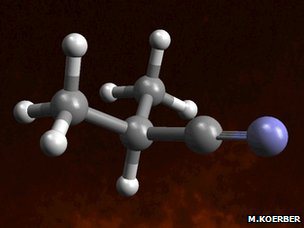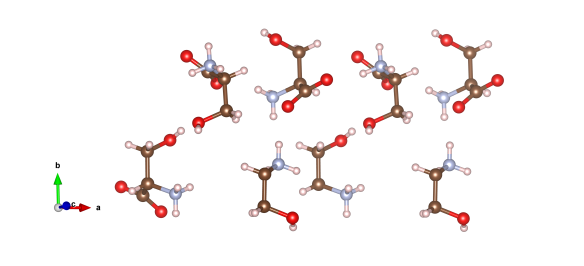Chasing complex molecules in the stars – looking for L-Serine
Amino acids are the building blocks of life. They are small molecules, 500 different ones – but there's a subset of 21 that build up to make all of the proteins and peptides that make us, and the machinery of life around us. For many years astronomers have been searching for the signal of amino acids in the stars, as it would be a sign that complex life could be built elsewhere in the universe.
On Friday, a group of astronomers announced that they has seen the signal for the most complex molecule yet found in the stars. In a star-forming cloud 27,000 light years from us, they spotted a signal from the molecule iso-propyl cyanide. Similar work back in 2009 identified Ethyl Formate, leading the researchers to conclude that the centre of the galaxy would taste of raspberries…

Image of the iso-propyl cyanide molecule recently detected 27,000 light years away.
Though iso-propyl cyanide itself is not an amino acid, it's the closest to this type of molecule yet found – mainly because it has a 'backbone' of carbon atoms.
But what does the crystal structure of an amino acid look like?

Here the red atoms are oxygen, the pink hydrogen, light blue nitrogen and the brown atoms are the carbon atoms. Image generated by the VESTA (Visualisation for Electronic and STructural analysis) software http://jp-minerals.org/vesta/en/
What is it and did the structure come from?
This is L-Serine, one of the 21 amino acids that build the cells which make up most life on Earth. Like iso-propyl cyanide it has a backbone of three carbon atoms. The structure of Serine was first determined in the 1950s, but the structure we've featured here is from a high-pressure study by Moggach et al. It is #2100237 in the Crystallography Open Database.






